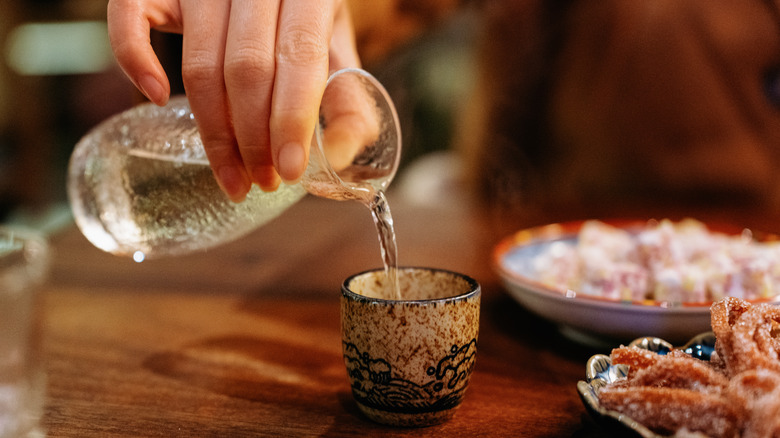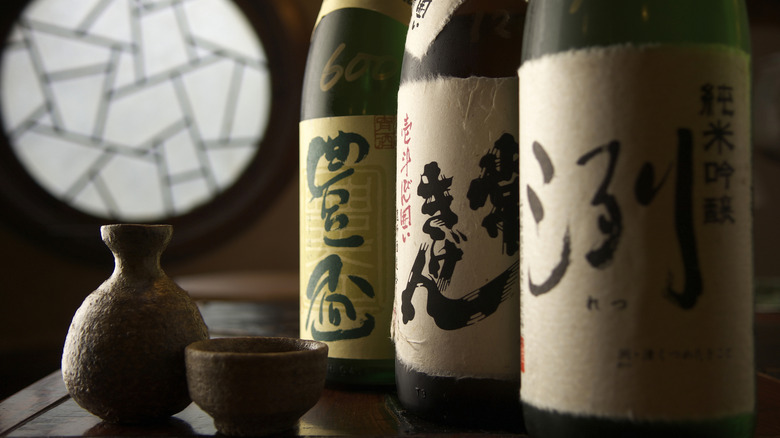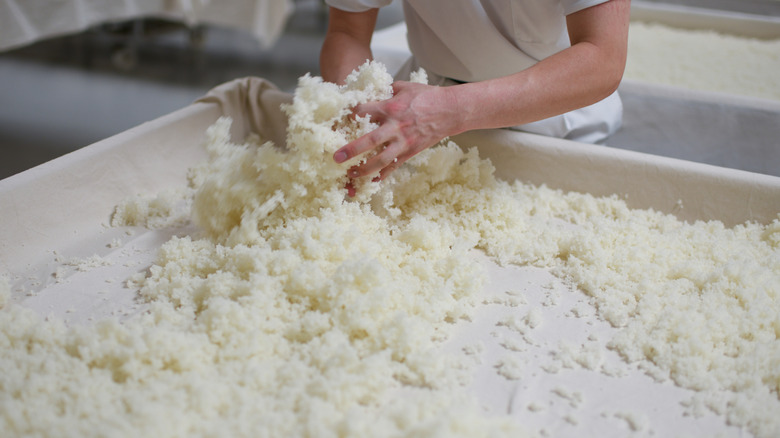Why Traditional Japanese Sake Making Was Recognized By UNESCO
On December 4th, 2024, the UNESCO Intergovernmental Committee registered "traditional sake brewing" as an Intangible Cultural Heritage (ICH). Even without knowing what that means, the cultural significance of sake in Japan should be fairly evident. Dating back about 2,500 years, sake shows up prominently alongside Japanese meals, at weddings, and in many rituals. As UNESCO put it, "viewed as a sacred gift from deities, sake is indispensable in festivals, weddings, rites of passage and other socio-cultural occasions."
The declaration is a big deal. First, it's nice to have the hard work of centuries of farmers, brewers, craftspeople, and merchants receive global recognition. It also helps contribute to the sustainable development of traditional cultural practices, according to UNESCO. The Japanese government and industry groups like the Japan Sake and Shochu Makers Association (JSS) are hopeful the status will help boost new awareness, jumpstart interest in drinking sake, and encourage young Japanese people to take up the skills required to make sake.
Because the focus of the ICH is on koji fermentation, the registration also covers other Japanese koji-fermented alcohol like shochu and awamori, according to Hitoshi Utsunomiya, director of the JSS. Shochu, similar to Korean soju, are distilled spirits, distinct from sake, which is brewed, like wine or beer.
Why UNESCO recognition means so much
Recognition of achievement, whether Oscar awards from the Academy of Motion Picture Arts and Sciences, or a double gold medal from the New York International Spirits Competition, helps validate a given industry product, and raises awareness among consumers. But UNESCO holds a special place in terms of historic and cultural recognition. The organization, a branch of the United Nations, is focused on global childhood education, along with support for science and culture. Each year it acknowledges Intangible Cultural Heritage: rituals, social practices, festivals, and the "knowledge and skills needed to produce traditional crafts." Sake making was chosen this year along with 59 other traditions and living inherited expressions from around the world.
In highlighting koji fermentation and sake making, UNESCO is recognizing not only traditional crafts, but the "many hands and strong teamwork" needed among farmers, sake producers, and communities. Organizations like the JSS and others hope the recognition encourages global consumption. While global sales have been on the rise in recent years, sales are down domestically 75% since 1973. And it's not just sales that may get a boost in Japan, but interest in the craft of sake making itself.
"By being recognized internationally, by this mechanism, that will renew the interest of the Japanese people in this area," Kano Takehiro, Japan's ambassador to UNESCO told ABS-CBN News, "and that could lead to more momentum of transmitting the skills and know-hows to the next generation."
Why sake has Intangible Cultural Heritage status
Sake is fermented and brewed from rice. Where other fermented alcohol, like wine and beer, rely on natural or commercial yeasts to convert sugars and starches into alcohol, sake starts with koji. Koji is cooked grain (usually rice, soybeans, or barley) inoculated with Aspergillus oryzae, or koji mold. It's activation of the mold which then allows yeast to convert starches to alcohol. The mold adds a distinctive umami-sweetness and is used to ferment everything from sake and miso to the sweet rice wine mirin (a tasty way to upgrade your fried rice).
Sake makers don't simply add mold to a batch of rice and water and walk away. Specialized sake rice (with a porous core where the koji fungus thrives) is polished and reduced by specific amounts for varying sake styles. Then toji (sake masters) and kurabito (brewery workers) monitor both the koji development, and later the shubo, or yeast mother culture, before production and maturation of the actual sake even begins.
Becoming a toji traditionally involved years-long "watch and learn" apprenticeships and was the dominant system as recently as 1989. Nowadays, the system exists in some places, but many sake producers hire graduates of college agricultural programs. The goal is the same: spend years learning every element of the process and learn to control each step. If you'd like to toast the new ICH designation with a bottle of sake, here's how long it will stay fresh once opened.


